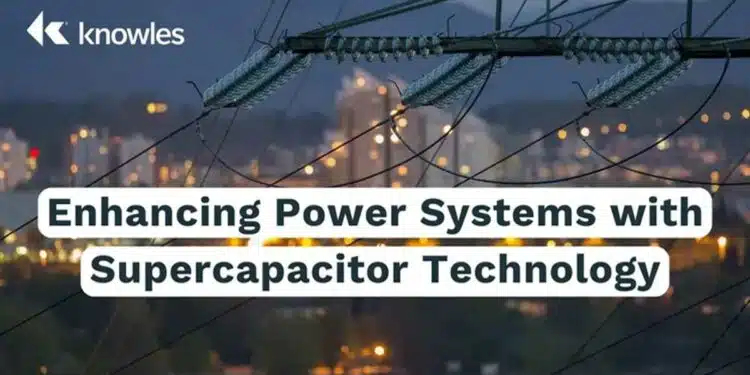Knowles Precision Devices issues a new ebook, Supercapacitors in Power System Design, which explores how supercapacitors are transforming energy storage strategies across industries.
From EVs and industrial automation to renewable energy and smart logistics, power systems are becoming increasingly complex. As a result, they’re increasingly dependent on reliable, high-speed energy storage too.
Enter supercapacitors, a critical technology bridging the gap between traditional batteries and real-time power demands.
Supercapacitors store and deliver energy electrostatically, rather than chemically like traditional batteries. This fundamental difference yields several key advantages:
- Ultra-fast charging and discharging, ideal for short bursts of power.
- Long operational life supporting millions of cycles with minimal degradation.
- Wide temperature range, functioning reliably from -40°C to 75°C.
- High efficiency and sustainability with up to 99% charge/discharge efficiency and materials that are easier to recycle.
In Supercapacitors in Power System Design, we explore how supercapacitors are transforming energy storage strategies across industries. Whether you’re designing for rapid power delivery, harsh environmental conditions, or extended device longevity, this resource gives engineers the insights they need to make smarter design choices.
What You’ll Learn
The ebook covers essential design principles and practical applications of supercapacitors, including:
- Performance Fundamentals: Understand the tradeoffs between energy density and power density, and how to calculate the metrics that matter for your design.
- System-Level Integration: Explore how supercapacitors are used in real-time clock backups, uninterruptible power supplies (UPS), and hybrid energy storage systems that pair with batteries in microgrids. These use cases highlight their value in bridging short-term outages and supporting peak power demands.
- Industrial & Medical Application Examples: See how supercapacitors improve safety and performance in fail-safe valve controls, deliver consistent power for high-precision MRI imaging, and support the instant energy needs of robotics in smart warehouses.
- Design & Selection Guidance: From choosing the right cell configuration to managing thermal constraints and lifecycle expectations, we offer practical advice for engineers seeking to implement supercapacitor technology with confidence.
For further reading, download the full ebook.






























